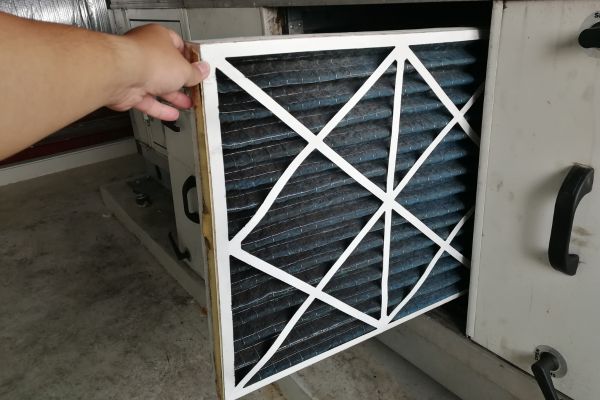Keeping your home’s heating system in peak condition requires regular maintenance, and one of the simplest yet most important tasks is learning how to change your furnace filter. Many homeowners overlook this crucial step, leading to reduced airflow, higher energy bills, and even costly repairs. By understanding the process and the reasons behind it, you can protect your furnace and ensure your indoor air stays clean and healthy throughout the year.
Why Changing Your Furnace Filter Matters
Your furnace filter serves as the first line of defense against dust, dirt, pollen, and other airborne particles that can circulate through your home. Over time, these filters accumulate debris, making it harder for air to flow through the system. This not only forces your furnace to work harder but also compromises indoor air quality, which can aggravate allergies and respiratory issues.
When you know how to change your furnace filter properly, you help your heating system operate efficiently while extending its lifespan. In fact, replacing a dirty filter can reduce your energy consumption by up to 15%, according to the U.S. Department of Energy.
Identifying the Right Furnace Filter for Your System
Before you begin, it’s essential to determine which type of furnace filter your system requires. Furnace filters come in various sizes and materials, from basic fiberglass filters to high-efficiency pleated models. To find the right fit, check the existing filter for size dimensions printed on the frame or refer to your furnace’s user manual. Choosing the correct filter ensures proper airflow and effective filtration, which are critical for maintaining your system’s performance.
Preparing to Change Your Furnace Filter
Safety should always be your priority when performing any maintenance on your furnace. Start by turning off the system at the thermostat and, if possible, shutting off the power at the breaker. This step prevents the furnace from turning on while you’re working and eliminates any risk of injury.
Next, locate the filter compartment. It is usually positioned near the blower or air intake area. Some furnaces have a door or panel you need to open to access the filter. Take note of how the old filter is positioned, especially the direction of the airflow arrows printed on its frame, as this will guide you during installation.
Removing the Old Furnace Filter
Gently slide the old filter out of its slot, being careful not to shake it excessively to avoid releasing trapped dust back into the air. Examine the filter to assess its condition. If it appears gray and clogged with debris, it’s definitely time for a replacement. In general, filters should be replaced every one to three months, depending on the type, usage, and presence of pets or allergy sufferers in your home.
Installing the New Furnace Filter Correctly
With your new filter ready, position it so that the airflow arrows align in the same direction as the old filter. This ensures the filter is installed properly, allowing your system to operate efficiently. Slide the new filter gently into place, making sure it fits snugly in the compartment without bending or forcing it. A properly seated filter prevents air from bypassing the filter material and entering the system unfiltered.
Once the new filter is securely installed, replace any covers or panels you removed earlier. Restore power to the furnace and set the thermostat back to its desired setting. Your heating system is now equipped to deliver clean air and operate at peak efficiency.
How Often Should You Change Your Furnace Filter?
Knowing how to change your furnace filter is only part of the equation; understanding when to change it is equally important. The frequency depends on various factors such as filter type, home size, occupancy, and environmental conditions. For example, households with pets, smokers, or allergy sufferers may need to replace filters more often than homes without these factors.
To stay on top of this routine, consider setting reminders on your calendar or using a smart thermostat with maintenance alerts. Regular replacement not only keeps your furnace running smoothly but also protects your family’s health by reducing airborne pollutants.
Benefits of Regular Furnace Filter Replacement
Changing your furnace filter regularly offers multiple benefits beyond just improved airflow. It enhances energy efficiency, which lowers your monthly utility bills. Clean filters also help maintain consistent indoor temperatures by preventing your furnace from becoming overworked or overheating.
Moreover, this simple maintenance task reduces wear and tear on the system, lowering the likelihood of expensive repairs or premature failure. In the long run, it’s an affordable step that saves both money and stress.
Common Mistakes to Avoid When Changing a Furnace Filter
While the process is straightforward, homeowners often make small errors that can have big consequences. Installing the filter backward is a common mistake that hinders airflow and may damage the furnace. Using the wrong filter size can also create gaps, allowing dust to bypass the filter. To avoid these issues, double-check the size and airflow direction before installation.
Another mistake is neglecting to replace the filter at recommended intervals. Even if your furnace appears to be working fine, a clogged filter can silently strain the system until problems arise. Staying proactive is key to keeping your heating system healthy.
Final Thoughts: Keep Your Furnace Running Strong
Now that you understand how to change your furnace filter, you can take control of this essential home maintenance task with confidence. Regular filter replacement not only keeps your furnace running efficiently but also improves indoor air quality and extends the life of your heating system.
By setting a routine and choosing the right filter for your home, you’ll enjoy cleaner air, lower energy bills, and the peace of mind that comes with a well-maintained furnace. Don’t wait for signs of trouble—make filter replacement a habit and keep your home’s heating system operating at its best all year round.







